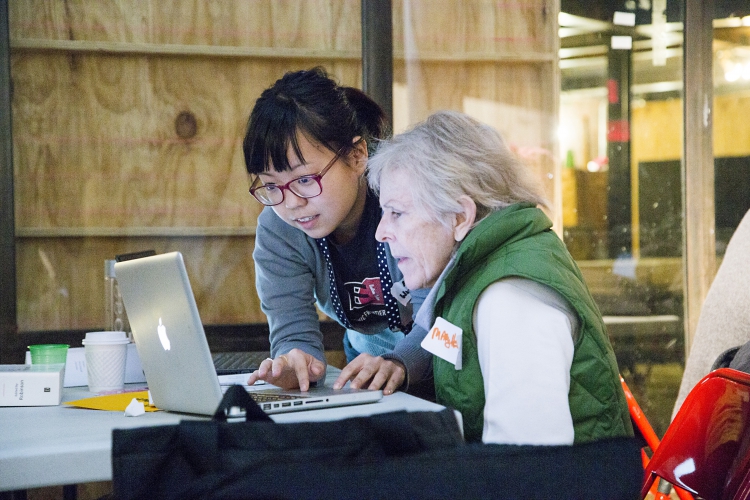Intergenerational learning is often seen as an informal practice inside the familial sphere. Typically, it can refer to grandparents sharing their wisdom and advice with their family. More and more, intergenerational learning are referred to as an external model, where advice are transmitted outside the family, in an “extrafamilial model”, as stated by Sally Newman and Alan Hatton-Yeo in their article about intergenerational learning. Today, intergenerational learning can be seen as a new way to teach and learn, in a non-formal perspective.
The concept of intergenerational learning
Intergenerational learning can be defined according to ENIL – the European Network for Intergenerational Learning – as a learning partnership based on reciprocity and mutuality involving people of different ages working together to gain skills, values and knowledge. Intergenerational learning provides a nonthreatening, reassuring learning environment and creates learning opportunities and activities that are relevant to the learner.
According to EMIL – the European Map of Intergenerational Learning – due to an increasing geographic mobility of people, generations are more frequently segregated from one other, particularly younger and older people. This separation can lead to unrealistic, negative stereotypes between generations and a decrease in positive exchanges between them. Even though these separated generations often value each other and share common areas of concern.
The topic of intergenerational learning has also raised the interest of policy-makers. The World Youth Report of the United Nations in 2003 about young people, has devoted a whole chapter to intergenerational relations, saying that policies based on an intergenerational approach “should promote an essential interdependence among generations”. According to the report, “the challenge now for policy-makers is to enable situations where the elderly are encouraged to be active participants in communities where they live to the benefit of all”. Hence, supporting exchanges between generations could lead to engaging new learners and promote intergenerational learning as a vehicle to achieve global intergenerational solidarity.
An effective way of promoting solidarity
According to ENIL, many benefits can be collected thanks to this method.
For example, it can help to address some of today’s European challenges, such as the digital divide between the young and the old, literacy problems and risk of social exclusion for vulnerable groups such as senior citizens, migrants and young people at risk.
According to Sally Newman and Alan Hatton-Yeo, the benefits of intergenerational learning include for senior people, a gratification for their contribution to the community and a deeper understanding of the younger generation. At the same time, younger learners have the opportunity to increase their self-esteem, self-confidence and deeper understanding of older adults.
Finally, both generations have the feeling of being valued, accepted and respected, they enhance their knowledge and skills, and can start the creation of a meaningful, trusting intergenerational relationship, Sally Newman and Alan Hatton-Yeo write. Thus, both generations are empowered, and issues such as building active communities, promoting citizenship, regenerating neighbourhoods and fighting inequality can be addressed.
Engaging new learners on the field
The 109 project, created in 2016 in Belgium by an association called “Le monde des possibles” decided to use the benefits of intergeneration learning to bring together seniors and migrants. Migrants seeking for jobs are linked with older citizens, usually retired, creating a fruitful group of two.
The aim of the project is to fight the precariousness of young people by promoting their socio-professional integration in Belgium, when the mentors have the possibility to share their personal life experience and gaining a better understanding of the challenges faced by migrants.
According to Mauricette Crutzen, coordinator of the project, this partnership is based on the principle of reverse mentoring. “When mentoring traditionally involves accompanying a young person by an older person, reverse mentoring offers the opposite. Indeed, the young person will benefits of knowledge from the senior, but he will also teach him his knowledge, for example how to use new technologies” says Ms. Crutzen. This is what Sally Newman and Alan Hatton-Yeo identify under the concept of reciprocity, referring to the exchange of knowledge and skills across generations. Indeed, intergenerational learning must be seen as a two-way learning, a vice versa process.
Intergenerational learning method can thus be seen as a tool with multiple purposes. Facilitation of the inclusion of older people within the economic and social life, acquisition of ICT skills as a means to greater independence, easier access to the labor market, combating literacy issues and reducing social isolation are only few of the benefits of this method.
Text: Lou-Andréa PinsonPhotos: Michael Mandiberg / Wikimedia Commons

